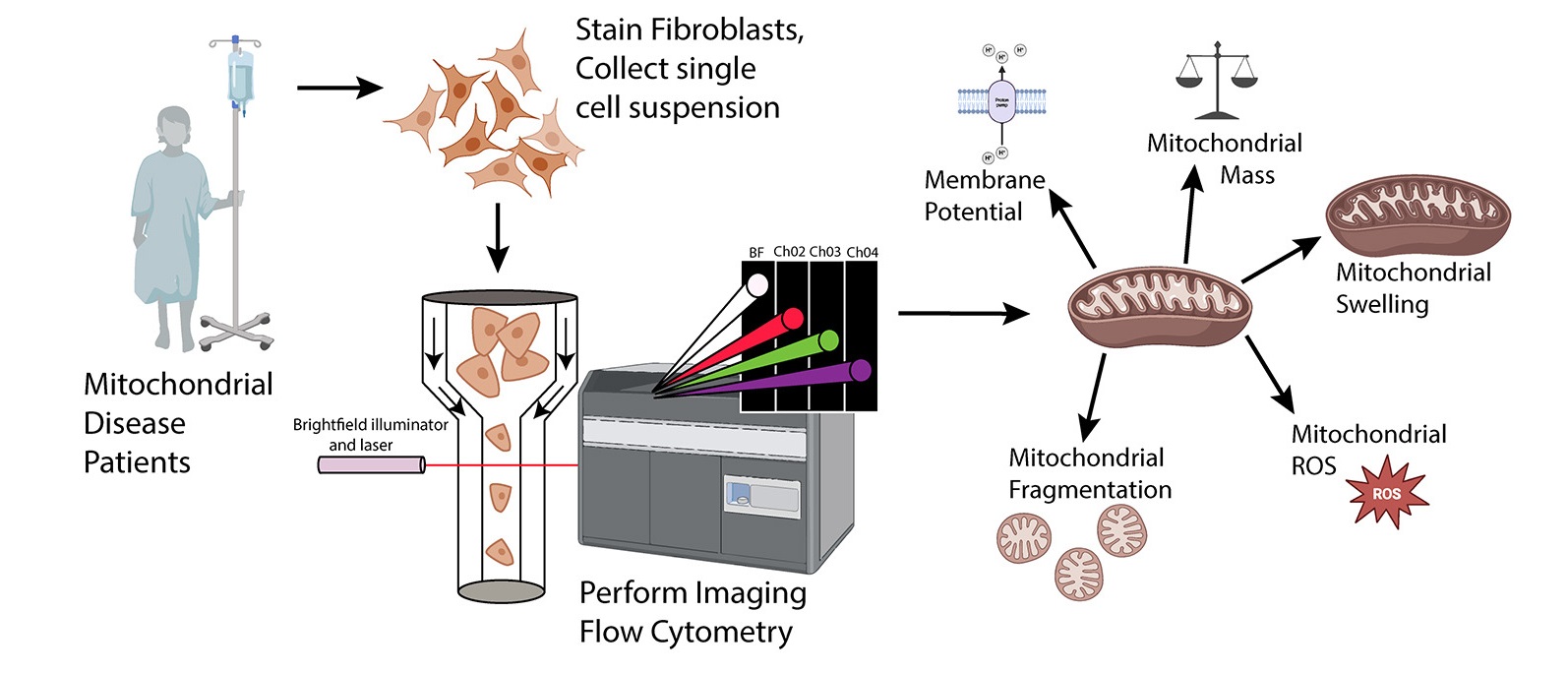Mitochondrial Phenotype Analysis Service
Mitochondria are the primary source of cellular energy, and their morphology and functional state directly affect cellular health and metabolism. Therefore, mitochondrial phenotype analysis is crucial for revealing the role of mitochondria in diseases. This service uses imaging technology, flow cytometry, and other methods to assess mitochondrial characteristics such as number, size, membrane potential, and morphological changes, thereby revealing their performance in cellular function.
Mitochondrial phenotype analysis service is widely applied in metabolic diseases, neurodegenerative diseases, cancer research, aging mechanisms, and other fields. By analyzing mitochondrial phenotypes, researchers can gain a deeper understanding of the role of mitochondria in key biological processes such as energy metabolism, cellular signal transduction, and oxidative stress, providing strong data support for disease mechanism exploration, target discovery, and drug screening.
Services at MtoZ Biolabs
Based on advanced technological platforms, MtoZ Biolabs offers the mitochondrial phenotype analysis service focusing on the analysis of mitochondrial morphology, structure, and dynamic behavior. We can quantitatively assess mitochondrial characteristics such as number, size, morphological changes (such as fusion and fission), membrane potential, and respiratory function. The service also integrates bioinformatics analysis to provide multidimensional data, helping to gain deeper insights into the critical roles mitochondria play in cellular energy metabolism, oxidative stress, apoptosis, and other physiological processes. This provides crucial support for disease mechanism research, target discovery, and drug screening.
Analysis Workflow
1. Sample Preparation and Mitochondrial Isolation
Mitochondria are efficiently isolated from cells or tissues using differential centrifugation and other methods, ensuring the purity and integrity of the mitochondrial sample.
2. Phenotype Assessment
High-resolution microscopy, flow cytometry, and other techniques are used to assess mitochondrial morphology, size, membrane potential, and other biological characteristics, analyzing their changes under different physiological and pathological conditions.
3. Data Collection and Processing
Data is collected using advanced imaging systems and analysis software, and multidimensional statistical methods are applied to interpret the dynamic changes in mitochondrial phenotypes.
4. Functional Analysis and Pathway Interpretation
By combining mitochondrial functional assessment with bioinformatics tools, we provide an analysis of the biological significance and regulatory mechanisms of mitochondrial phenotypes in processes such as energy metabolism and cellular stress.

Muffels, I J J. et al. iScience, 2024.
Figure 1. The Workflow of the Mitochondrial Phenotype Analysis.
Sample Submission Suggestions
1. Sample Type
Suitable for animal cells, tissue samples, and isolated mitochondria. It is recommended to provide an adequate amount of sample to ensure the purity and representativeness of mitochondrial isolation.
2. Sample Preservation and Transportation
Samples should be stored at −80°C immediately after processing and transported on dry ice to ensure cold chain transportation. Avoid repeated freeze-thaw cycles to preserve the mitochondrial function and structure.
3. Additional Notes
If the sample has undergone partial processing (such as cell homogenization or initial isolation), please provide the relevant processing information to optimize the subsequent analysis workflow.
Service Advantages
1. High Sensitivity Analysis
Using advanced imaging technologies and flow cytometry, we accurately assess mitochondrial morphology, size, membrane potential, and other phenotypic characteristics, ensuring high sensitivity and reliability of the analysis data.
2. Comprehensive Phenotype Assessment
By integrating various techniques, we provide a comprehensive evaluation of the dynamic changes in mitochondrial phenotypes under different physiological or pathological conditions, helping to reveal their crucial role in cellular function.
3. Personalized Data Interpretation
Combining multidimensional statistics and bioinformatics analysis, we offer customized interpretation services, allowing clients to delve deeper into the biological significance of mitochondrial phenotype changes.
4. Tailored One-Stop Service
We provide a full-process, customized service from sample preparation and phenotype evaluation to data analysis and reporting, meeting various research needs and saving clients' time and effort.
Applications
1. Metabolic Disease Research
By analyzing changes in mitochondrial phenotypes, we uncover the mechanisms of mitochondrial dysfunction in metabolic diseases, aiding the discovery of potential therapeutic targets.
2. Neurodegenerative Disease Exploration
The mitochondrial phenotype analysis service can be used to study the morphological and functional changes in mitochondria in neurodegenerative diseases, revealing the regulatory role of mitochondria in the neurodegeneration process.
3. Cancer Research
By analyzing mitochondrial phenotypic changes in cancer cells, we explore the impact of mitochondrial metabolic reprogramming on cancer development, supporting the development of new biomarkers and targeted drugs.
4. Aging and Oxidative Stress Research
The mitochondrial phenotype analysis service can be used to investigate changes in mitochondrial function during aging, revealing the critical role of oxidative stress in the aging process, and supporting anti-aging research and homeostasis regulation mechanism exploration.
FAQ
Q1: Does the Service Support Mitochondrial Phenotype Analysis from Frozen Samples?
A1: Yes, we support the analysis of frozen samples. To ensure mitochondrial stability and functional activity, we recommend that samples be rapidly frozen in liquid nitrogen and stored at −80°C. Please use dry ice during transportation and avoid repeated freeze-thaw cycles.
Q2: Do You Support Customized Analysis under Specific Conditions?
A2: Absolutely. Based on your research needs, we can tailor the analysis process, including specific treatments and multi-omics integrated analysis, to ensure the experimental design meets your specific requirements.
Deliverables
1. Comprehensive Experimental Details
2. Materials, Instruments, and Methods
3. Data Analysis, Preprocessing, and Estimation
4. Bioinformatics Analysis
5. Raw Data Files
How to order?







